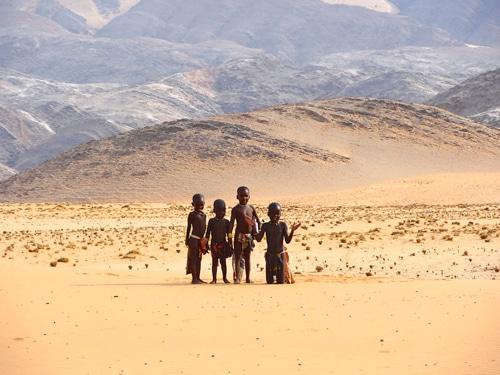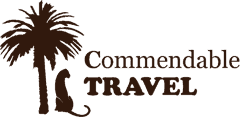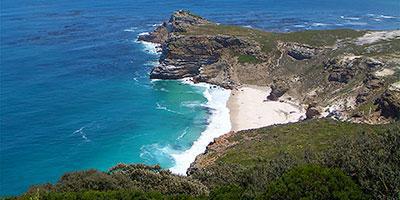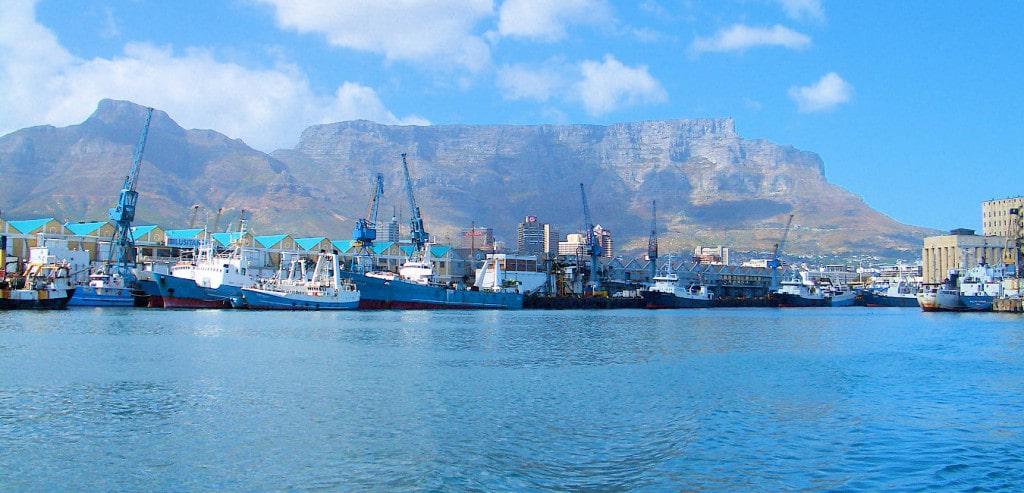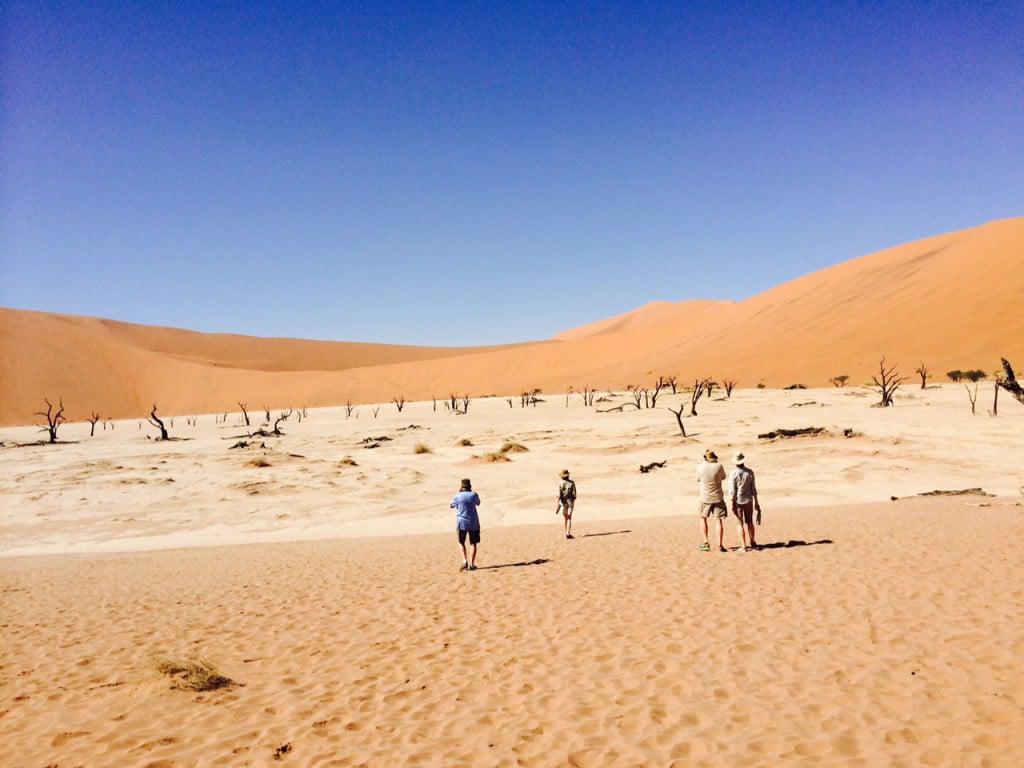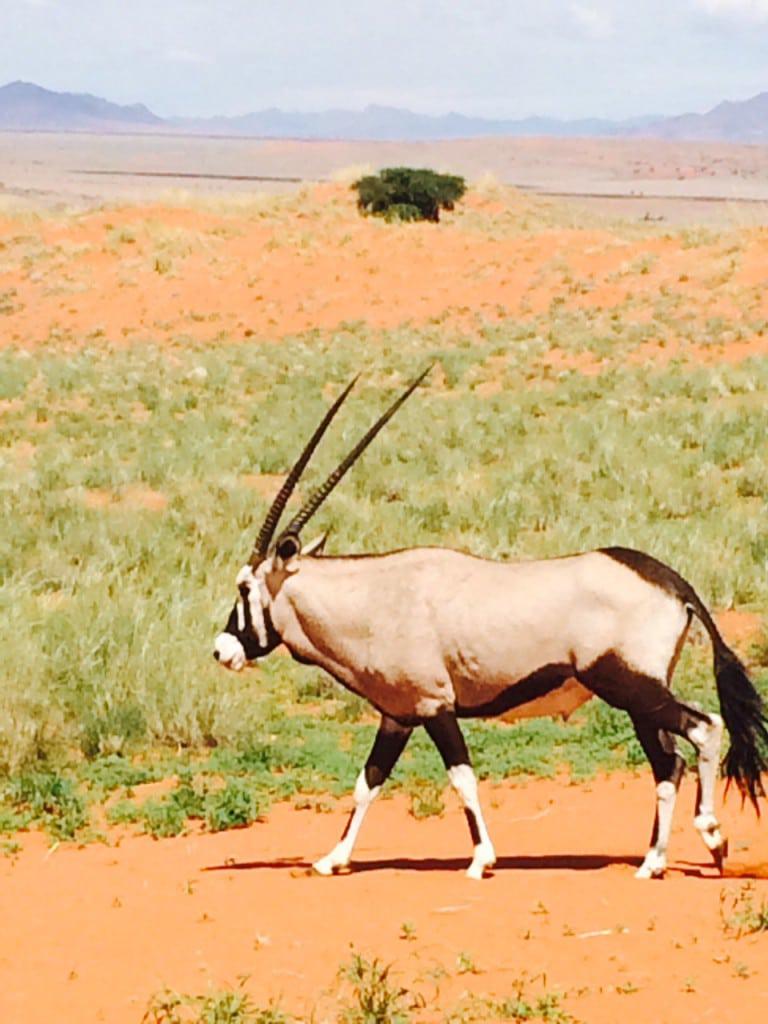Namibia is an awesome land, rough and desolate, but incredibly beautiful, in its vast, moon-like landscapes and endless horizons. It is a photographer’s dreamland, a land of contrasts and earthy colours. It is not the place for those who like bustling beaches and the social whirl, but for those who are drawn to nature, stillness, the romance of the grandiose landscape, and vast expanses. Namibia is one of the least populated countries on earth for good reason. Survival is difficult for plants and animals; for man and beast. Survival is for the fittest and depends on adaptation to this arid environment, to all the tricks that nature can throw up. Because of its barren coastline, Namibia was one of the last parts of Africa to be colonized by Europeans. In 1883 a German merchant and adventurer, Adolf Luederitz from Bremen, bought the Bay of Angra Pequeña from Nama Chief Joseph Fredericks from Bethanien. The German Colonial Period was not a happy one for the indigenous people.
Days 1-2: NamibRand Reserve
Day 1 – Departure from Cape Town airport early in the morning on a 2 hour commercial flight to Windhoek, the capital of Namibia. We will visit a resort in the countryside outside of Windhoek before returning to the airport to join our charter flight that will take us on a very scenic flight over the NamibRand Reserve, spanning 180 000 hectares (445000 acres) of pristine desert wilderness (the largest private nature reserve in Southern Africa), to our lodge in the desert, Little Kulala, operated by Wilderness Safaris. The Namib – known as ‘The Living Desert’ – is a world of vast space, endless horizons of red sand, dramatic desert-scapes and jagged mountain heights. At Little Kulala, there are 11 climate-controlled, thatched “kulalas” (the word means ‘to sleep’) which merge impeccably into the desert landscape, each with private plunge pool, and both indoor and outdoor showers. An elegant entertainment area includes a library, wine cellar, craft boutique, lounge and dining areas. Little Kulala’s interiors make use of neutral colours, gorgeous textures and natural light and take its inspiration from its surroundings, notably from the magnificent Dead Vlei. In harmony with its surroundings, this is an impressive lodge both architecturally and for its services. If time permits, we will visit the nearby Sesriem Canyon, carved by water over millennia.
It is our base for two nights, and enables us on the following day to have an early start to see the largest Sand Dunes in the World, at Sossusvlei.
Day 2 – In the language of the Nama people of Namibia, the word ‘Sossus’ means a place where water collects. The word ‘vlei’ is an Afrikaans word meaning a depression where water collects. Loosely translated, Sossusvlei means ‘the place where water collects’. The visit to the tallest dunes in the world at Sossusvlei is an unforgettable experience. A walk up one of the dunes conveys dramatically how awesome this site is.
Days 3-5: Skeleton Coast
Day 3 – We fly out this morning to the infamous Skeleton Coast, with refueling stops at Swakopmund, the main harbor for the German Colony (Walvis Bay being in British hands), and the airstrip at Dora Nawas, before arriving at the Hoanib Skeleton Coast Camp, which is located on the Hoanib River in the northern part of the private Palmwag Concession. Its location thus straddles the Palmwag area and Skeleton Coast National Park, in one of the most remote areas of the Kaokoveld. A land of rugged scenery, the area has a historic coastline, mountains, vast plains, and dry riverbeds inhabited by incredible desert-adapted plant and animal life. Despite the arid environs, one of the greatest concentrations of desert-adapted elephant and lion can be found within this extraordinary area – along with sightings of giraffe, antelope, black rhino, leopard and cheetah. Exclusivity is taken a step further as the camp comprises only seven twin-bedded tents and one family unit. The camp looks out over the stunning rugged scenery and offers guests all the luxuries and amenities needed for an unforgettable stay.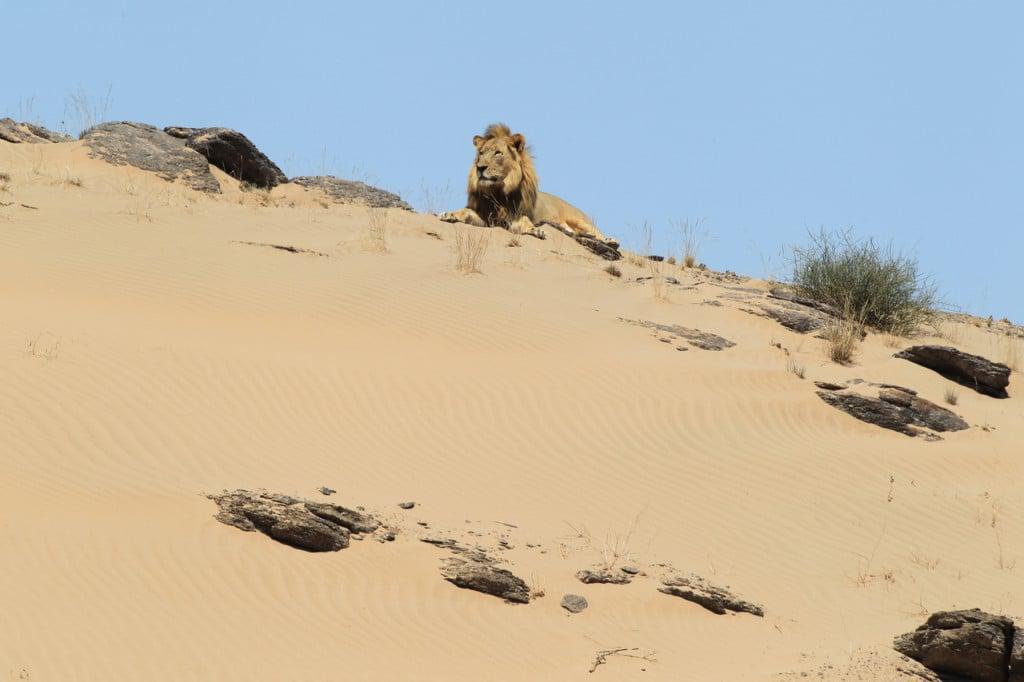 Day 4 – In this bewitching and splendid part of the planet, guests can unravel the enigmatic history of the original Strandlopers (Beachcombers), their stone circles lying in hidden valleys, studying the ancient Welwitschia plant, stalking the great herds, or savouring the endless landscapes unfolding – untouched – for hundreds of kilometres. Activities include nature walks, game drives, dune drives, use of hides, exploratory day excursions with picnic lunches and coastal visits exposing the astonishing desert-adapted wildlife, plants and birdlife of the area.
Day 4 – In this bewitching and splendid part of the planet, guests can unravel the enigmatic history of the original Strandlopers (Beachcombers), their stone circles lying in hidden valleys, studying the ancient Welwitschia plant, stalking the great herds, or savouring the endless landscapes unfolding – untouched – for hundreds of kilometres. Activities include nature walks, game drives, dune drives, use of hides, exploratory day excursions with picnic lunches and coastal visits exposing the astonishing desert-adapted wildlife, plants and birdlife of the area.
Day 5 – Today we will enjoy the scenic drive to and flight back from the Skeleton Coast (weather permitting) with its stark shores and enormous seal colonies. An unforgettable experience.
Days 6-9: Serra Cafema (Kunene River)
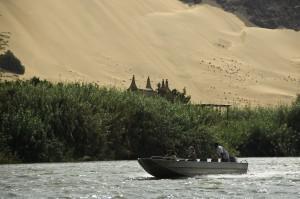 Day 6 – Now is the time to go to the NW corner of the country. This is one of the most spectacular landscapes in the world. On the banks of the Kunene River, undoubtedly amongst the most remote camps in Southern Africa, Serra Cafema is only reachable by light aircraft. The Kunene River creates a lush oasis along its banks – a winding band of green surrounded by the lunar-like landscape of the Namib Desert. Rapids just below camp provide a calming ambiance after a day exploring one of the driest, starkly beautiful regions in the world.
Day 6 – Now is the time to go to the NW corner of the country. This is one of the most spectacular landscapes in the world. On the banks of the Kunene River, undoubtedly amongst the most remote camps in Southern Africa, Serra Cafema is only reachable by light aircraft. The Kunene River creates a lush oasis along its banks – a winding band of green surrounded by the lunar-like landscape of the Namib Desert. Rapids just below camp provide a calming ambiance after a day exploring one of the driest, starkly beautiful regions in the world.
Accommodation at Serra Cafema consists of 8 riverside Meru-style canvas and thatched villas on spacious, elevated decks blended smoothly into the picturesque surroundings. The Serra Cafema Ozonganda, or main area, comprises indoor and outdoor dining areas, sunken lounge, library, curio shop and swimming pool, all sharing views of the Kunene River.
Day 7 – Activities at Serra Cafema revolve around the exploration of surrounding Namib Desert sands and the lush oases along the river, a journey of contrasts. Informative nature drives and carefully guided quad bike excursions through the fragile dunes allow guests to experience the true Namib in its unbridled glory. The utmost care is taken to tread lightly on the dunes and preserve the unique and delicate habitats of this landscape. Boating on the Kunene River provides guests with the opportunity to venture through the lush riverside oases. Crocodiles and water birds seem out of place in this surreal, lunar-like landscape.
Day 8 – Walking in the remote mountain and river valleys is also a highlight, as is a visit to a Himba settlement – one of the last true nomadic people in Africa. This has to be one of the most dramatic places on earth. It is extraordinary that this wonderful lodge even exists here.
Day 9 –We leave Serra Cafema and return via Ondangwa to Windhoek, where we spend a relaxing evening at out hotel. The next day, we will take a tour around the Capital in the morning before taking a mid-afternoon commercial flight to Maun in Botswana, the gateway to the Okavango Delta.
